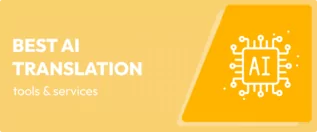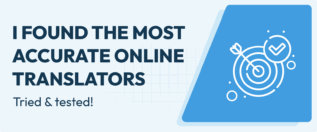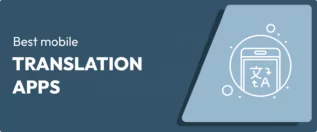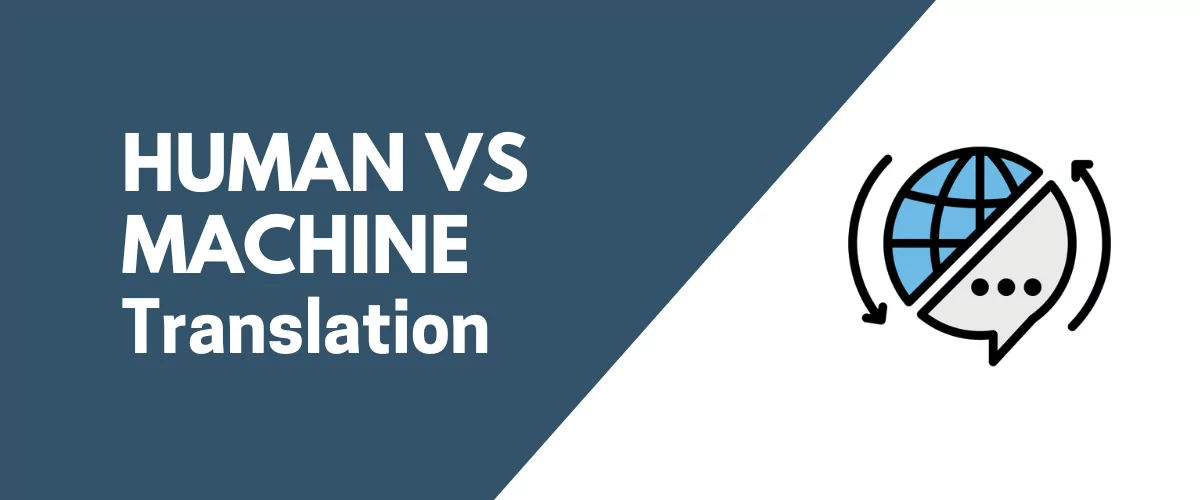
In this post
Not sure about human vs machine translation and which approach is better for your situation?
Whether you’re translating a document, a presentation, your website, or anything else, these are the two most common approaches to translating content in the modern world.
As the name suggests, human translation is when you have a human manually translate your content, while machine translation is when you have software automatically translate your content (typically using some type of machine learning-based model).
In general, human translation still reigns supreme when you need 100% accuracy, but it can cost more in both time and money.
Machine translation has improved a lot, but it still can’t offer 100% accuracy. However, its main advantages are that it’s very affordable and it offers essentially instant translations, all while being good enough for many use cases when it comes to accuracy.
In this post, we’ll dig deeper to help you understand where those conclusions come from by covering the following topics:
- How human vs machine translation works
- Why human translation is better than machine translation
- Why machine translation is better than human translation
- How to combine human and machine translation for the best of both worlds
Let’s dig in so that you can start translating!
How Does Human Translation Work?
Human translation works pretty much how you’d expect it to. A real human goes through the source material and translates it into the destination language.
You could translate the content yourself, if you’re multilingual. Or, a more typical approach for businesses would be to hire a freelance translator or use a professional translation service.
How the human adds the translations will depend on your use case and what software you’re using.
One common approach is to use PO editor software. In this software, the translator typically sees a side-by-side view of the original text and the translation. The translator will then go through string-by-string to fully translate the content and save the results as a .PO file:
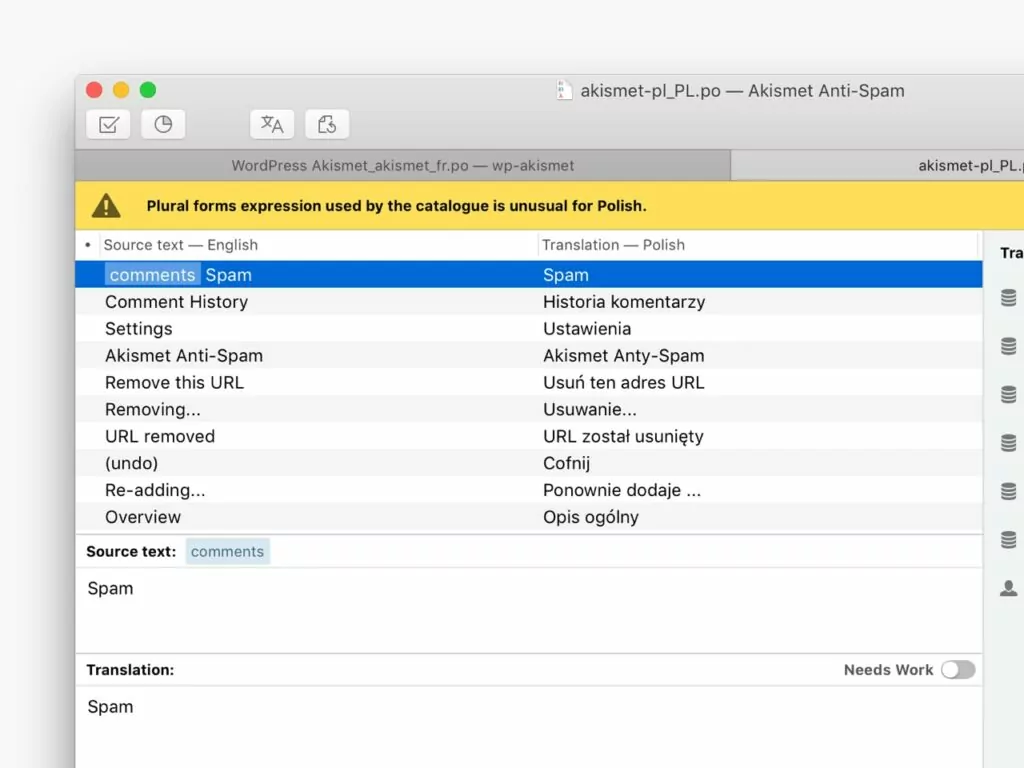
Once you have the finished .PO file with the translations, you could import it to your website/software (assuming it supports .PO files).
However, if you have a WordPress site, the human translator might work directly in the interface of your multilingual plugin.
For example, with the TranslatePress plugin, the human translator can work directly from a visual, point-and-click interface, which eliminates the need to use separate tools.

How Does Machine Translation Work?
With machine translation, the machine translation service will automatically translate your content without requiring any human input.
How you send your content to the machine translation service will depend on what type of content you’re translating.
For example, if you’re translating content from a Word document that you’ve written, you can just copy and paste it into the web-based interface of the tool – e.g. the Google Translate website. Or, some services let you upload .doc or .pdf files directly.
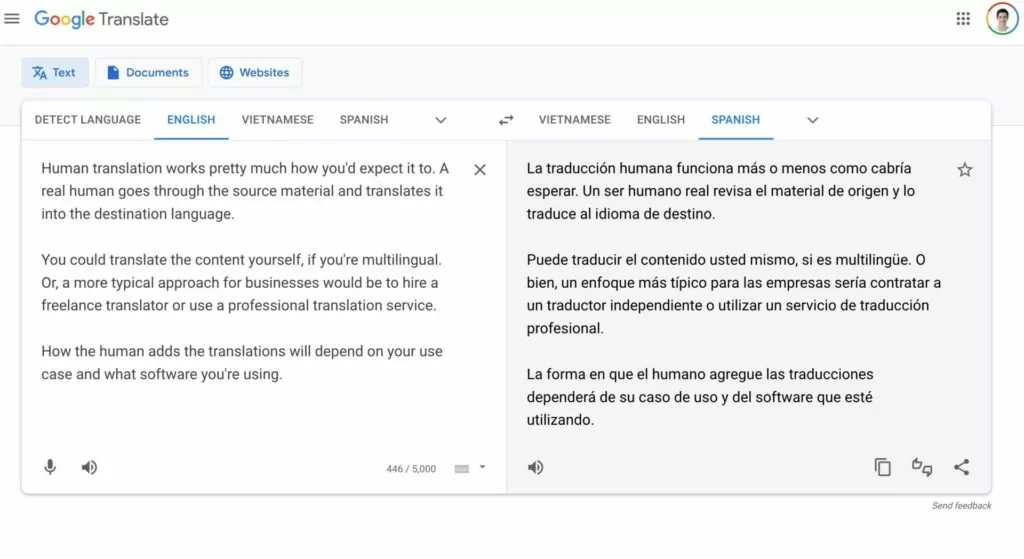
However, if you’re translating your own website, you’ll typically rely on the API integration instead.
Essentially, the API integration provides a way for your website to send and receive information to the translation service.
For example, if you’re using the TranslatePress WordPress plugin to automatically translate your WordPress site, the API lets TranslatePress connect directly to a service like Google Translate or DeepL.
TranslatePress will then send your website’s translations to the service. Then, after the service generates the translations, TranslatePress will receive the finished translations using the API and store them in your WordPress site’s database.
Basically, the API integration eliminates the need to manually send and download translations yourself.
How does the machine translation service itself actually generate the translations? Well, different services use different translation models.
The smarter services have long moved beyond just translating word-by-word. Instead, modern machine translation services like Google Translate look at entire sentences/paragraphs. This lets them be more accurate when translating context and meaning.
Why Human Translation Is Better Than Machine Translation
Using human translation services is better than machine translation when you need absolute accuracy.
While machine translation services have gotten a lot better over recent years, none of them have achieved 100% native-level accuracy yet.
For example, if you read our post on Google Translate accuracy, Google Translate is still only able to achieve ~90-95% accuracy at its absolute best, and the accuracy can be even lower depending on the language pairs that you’re using.
For some use cases, that level of accuracy just won’t cut it.
Human translation lets you ensure 100% accuracy in your translations, or at least as close to 100% accuracy as humanly possible!
If you’re working on an important presentation, this accuracy level could be essential to its success.
Similarly, if you have a website, you’ll typically want this level of accuracy for important sales pages, contact pages, legal terms, and so on.
Why Machine Translation Is Better Than Human Translation
Machine translation is generally better than human translation services when it comes to cost and speed.
To the first point, machine translation services are significantly cheaper than human translation services when it comes to the cost per word.
For example, human translation services generally start at around $0.10 per word on the low end (it can go much higher). So 100,000 words of translation could cost you a cool $10,000 even if you’re using an affordable service.
In contrast, something like Google Translate charges around $20 per 100,000 words. So to translate those same 100,000 words that might cost $10,000 for a human to do, you could pay just $20 for a machine to do.
DeepL is a bit more expensive than Google Translate (but has better translations for some languages), but it’s still just $25 per 100,000 words.
Obviously, that’s not a trivial difference!
Beyond cost, machine translation can also be a lot faster than human translation services, especially if you have a lot of content.
Machine translation services can translate hundreds of thousands or even millions of words in an instant, whereas a human translation service might take days or weeks to handle a translation job.
If speed is important to you, machine translation might be a better option…at least to start. More on that “at least to start” caveat in the next section.
In general, machine translation can make a better option for situations where low cost and effort are more important than having perfect 100% accuracy.
For example, let’s say you have a blog with 200 general information posts. It probably wouldn’t be worth it to have a human translate all those posts from scratch. But with machine translation, you could still offer them in different languages to create a better experience for your visitors (and benefit from multilingual SEO).
Even if the translated post has an error here or there, it probably won’t have any negative effect because basic informational blog posts aren’t usually mission-critical content.
You Can Mix and Match Human and Machine Translation
Here’s the really cool thing:
With the right tools, you don’t necessarily need to choose between human vs machine translation.
Instead, you can use both approaches to sort of get the best of both worlds.
The basic idea is that you start by using machine translation to translate your content. You can think of this machine translated content as your “baseline” translations.
Then, once you have your baseline translations, you can go back with human translation to manually refine those translations as needed.
Because the baseline translations are already there, this will usually take you a lot less time. But by still having a human go over the translations, you can make sure they read naturally and there aren’t any issues.
Depending on what you’re translating, you could use different variations of this strategy.
For example, maybe you have a website with some basic blog posts, as well as some important sales pages.
You could just go with the machine translations for the basic blog posts, while focusing your human editing efforts on the more important sales pages.
This lets you keep your costs down and implement translation very quickly, while still ensuring you have 100% accuracy for the most important content on your site.
How to Translate a Website With Machine and/or Human Translation
If you have a WordPress website that you want to translate, the free TranslatePress plugin makes it easy to translate your site using human translation services, machine translation, or a mixture of both.
To start, it gives you the option of using Google Translate or DeepL to fully translate all of your site’s content using machine translation. The Google Translate integration is free to use, while for DeepL, you’ll need a premium version of the plugin.
You can either use those translations as-is. Or, you can use them as your baseline translations and manually refine all of your translations using the visual, point-and-click editor, along with dedicated translator accounts if you’re working with freelancers or translation services.
Alternatively, you can completely skip machine translation and just have a human translate all of your content from scratch.
Basically, you can use the exact balance of human vs machine translation that fits your site’s specific situation.
Setting up automatic translation is easy if you want to use it – all you do is choose your service and add the API key so that TranslatePress can correct and send the translations to the service.
To help you do that, you can check out our guide on how to automatically translate WordPress.
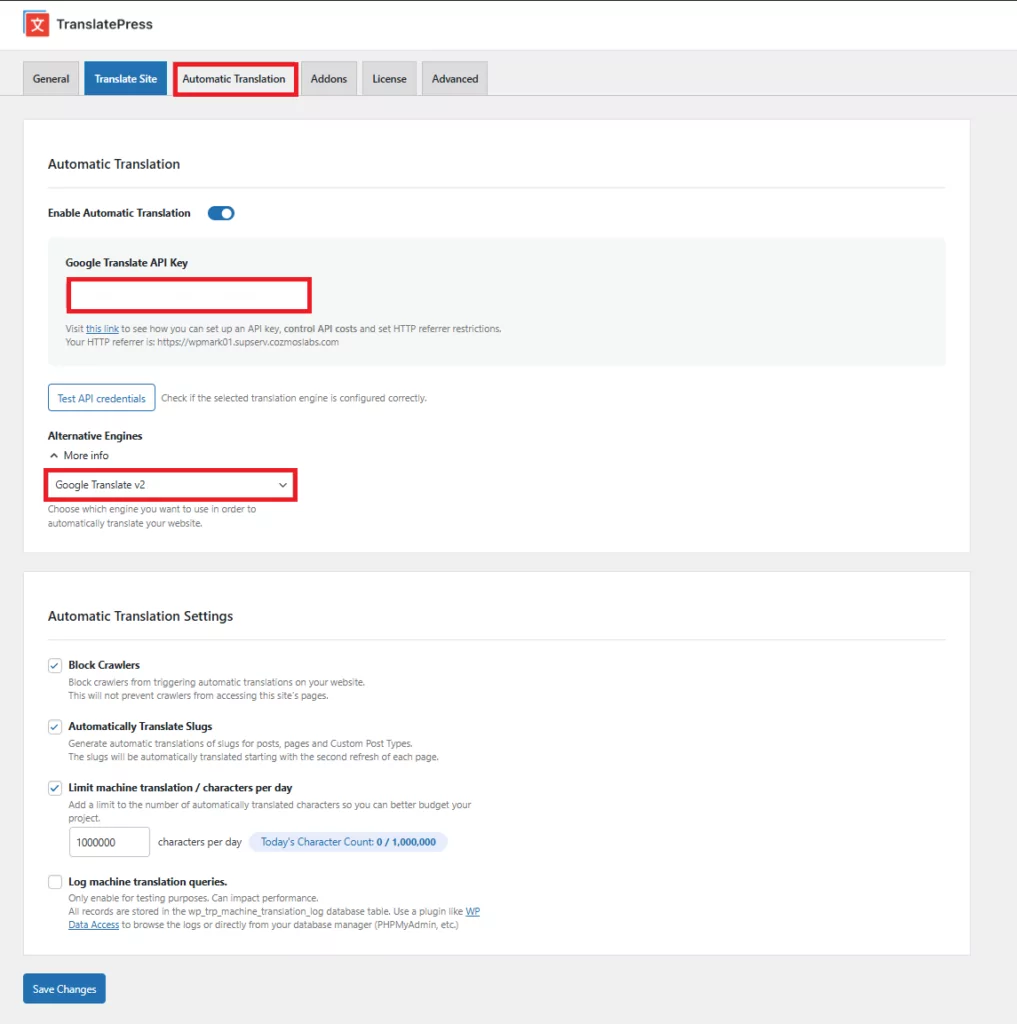
Whether you use machine translation or have a human translate your content from scratch, you’ll be able to use TranslatePress’ visual translation interface to manage all of your translations:

For an even more detailed guide on how to use TranslatePress, you can check out our full WordPress multilingual tutorial.
Human vs Machine Translation? Now You Know
Overall, human translation services and machine translation services both have their pros and cons.
Human translation services are ideal where accuracy is paramount. It’s a slower and more expensive approach (if you need to hire a third-party translator), but the upside is that you can guarantee every translation is accurate and sounds natural.
Machine translation services can’t guarantee the accuracy and natural sound of human translation services, but they are very fast and affordable in comparison to human translation.
If you want the best of both worlds, you can use a tool like TranslatePress that lets you combine human and machine translation.
You can use machine translation to quickly get up and running with baseline translations, while still paying a human to review and refine those machine translations where needed.
If you’d like to discover the best services to help you get started with either approach, you can read our detailed collections of the best human translation services and the best machine translation services.
And if you have a WordPress site, check out our guide on how to create a multilingual WordPress site to learn how TranslatePress can help you use human or machine translation – or even both approaches at the same time!
TranslatePress Multilingual
Do you still have any questions about human translation vs machine translation? Let us know in the comments!
